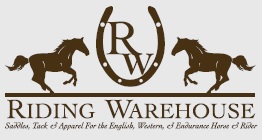 If you've ever wondered what the difference between a $100 and a $300 bridle is, this article might interest you--it's a side-by-side visual comparison of two bridles -- well, three, but one doesn't count. As you may know, I won a $300 Stubben bridle, and someone kindly lent me a new "everyday use" type bridle that retails for about $80 (close to $100, anyway). When we were introducing the bit to Riley, I bought a $20 bridle on Ebay. I was never able to use it. The stud broke off first time I tried to assemble it (there's a shocker).
If you've ever wondered what the difference between a $100 and a $300 bridle is, this article might interest you--it's a side-by-side visual comparison of two bridles -- well, three, but one doesn't count. As you may know, I won a $300 Stubben bridle, and someone kindly lent me a new "everyday use" type bridle that retails for about $80 (close to $100, anyway). When we were introducing the bit to Riley, I bought a $20 bridle on Ebay. I was never able to use it. The stud broke off first time I tried to assemble it (there's a shocker).
A word about quality "strap goods"
When googling for info on bridles, it pays to try the keywords bridlework and strap goods (I didn't think of these right away). The problem with doing a comparison online is that you can't feel, smell, or bend the leather to determine quality. For the record, quality leather and leatherwork is:
- Supple. The leather does not crack when bent 180 degrees. Dry leather cracks, and it's dry because it was damaged in the tanning process.
- Dense and weighty. It should have a heft to it.
- Sewn with quality thread, minimum 10-12 stitches per inch.
- Aromatic. It should have no smell or smell sweet, not sour.
- Smooth. Signs of poor quality include wrinkles, porousness, roughness, or fibers/tendrils on either side of the leather.
- Strong. It should not stretch more than a millimeter or two when stretched.
- Complemented by good hardware. Manufacturers that use good quality leather will also invest in sturdy hardware (stainless steel, brass, etc.) and strong/tight thread.

Standard disclaimer
You'll find this particular comparison is easy -- too easy, really, and I don't mean to take cheap shots at the low-end bridle. The goal here is to identify some points of comparison that can be used when you look at two bridles more similar in price and quality. All pix are the bridles photographed pre-oiling.
Overall impression
The $80 The bridle's description says "finest top grain leather, aniline dyed." The bridle looks fine for everyday use. It smells okay and feels all right too. Compared to the $300 bridle it's stiff, although you can bend it w/o any signs of cracking. It's a little "plastic-y" looking, but it is leather. The color is attractive, but it's a little "flat." Do you remember the really cheap hair dyes of yesteryear, how it removed the natural luster? This dye is similar. The $300 bridle looks, feels, and smells great. The color is a rich, dark amber/brown. The padding is quite soft.
After taking the pix, I oiled both bridles. The $80 bridle absorbed some oil, but frankly didn't change much. The $300 bridle absorbed the oil evenly and beautifully, as you'd expect for that price.
The $20 bridle
Okay, so here is the $20 bridle. It doesn't LOOK half bad, and based on photographs you might like it more than the $80 bridle. Trust me, the leather is crappo--hard, dry as particle-board, and mottled in color. When I oiled it, it sucked up the oil but at the moment it's fairly discolored and uneven. It might look better over time. Let's hope.




Below are some articles on evaluating leather quality. But if you want to make the job of choosing a bridle easier, go with the most reputable bridlemaker you can afford. I hope this helps!
Touch, smell, and sight: Tools for determining leather quality from Charlotte's Saddlery
How your leather tack is tanned from Equisearch
Leather Quality from New Zealand Horse Talk
How to identify leather quality in tack (Ebay)



















No comments:
Post a Comment
Hi Guys, Your comments are valued and appreciated -- until recently I never rejected a post. Please note that I reserve the right to reject an anonymous post.